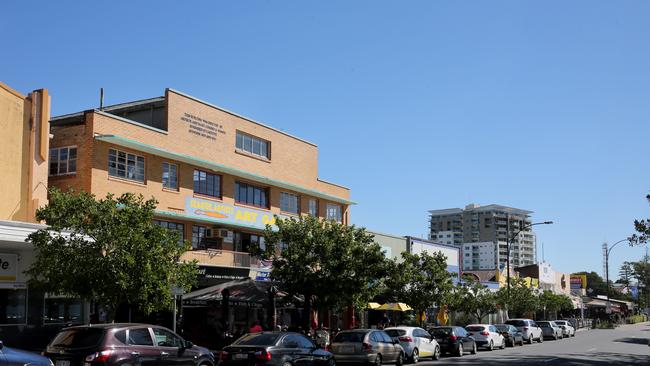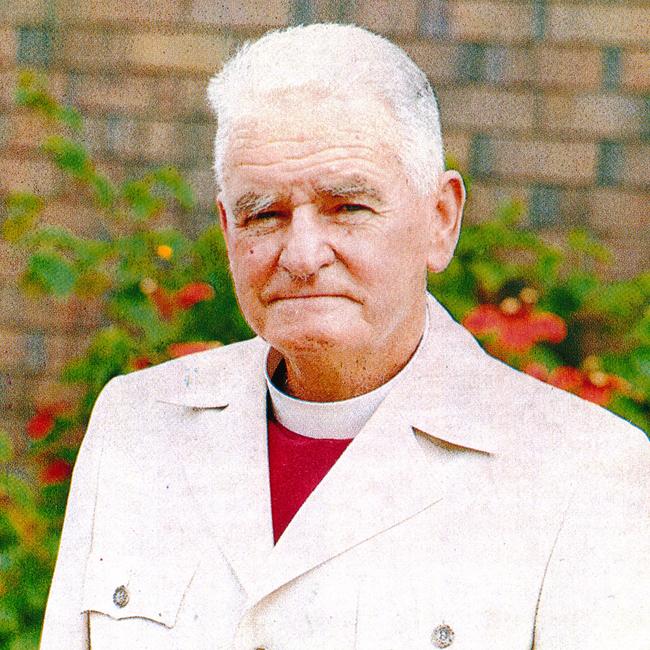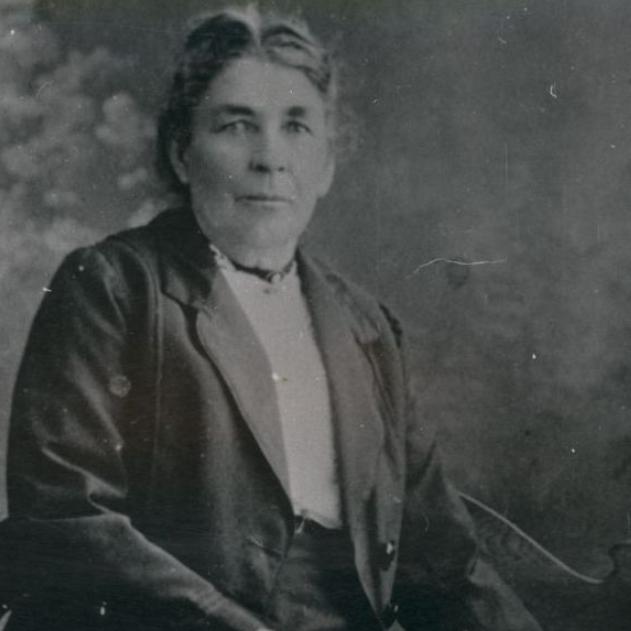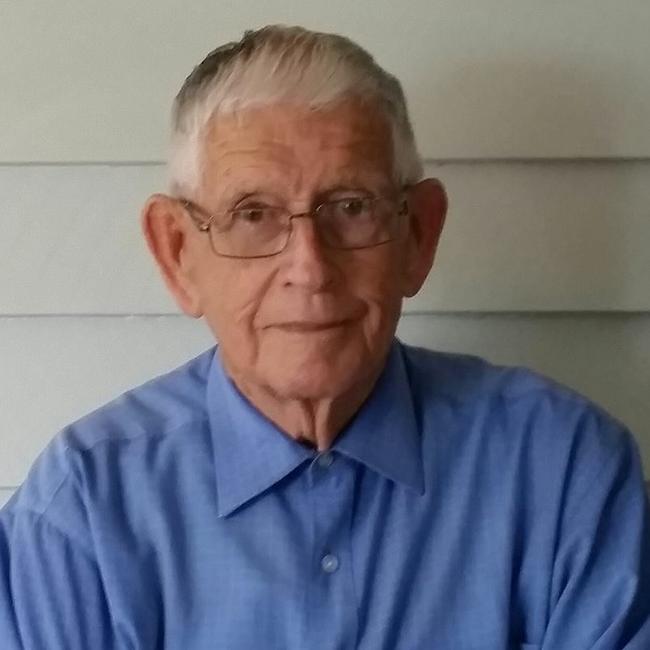Queensland’s first penal colony was established on the Redcliffe Peninsula in 1824 by a group of soldiers, convicts and government officials. Here are the people who have helped make Redcliffe the great place it is today.
In the first eight months they built a number of structures, including a jail and Commandant’s House — but scarcity of food and water forced them to relocate along the river to Brisbane.
Since then many people have played an important role in transforming Redcliffe into the amazing community it is today.
This list was put together with help from members of History Redcliffe. We acknowledge that there are many other people, not included on this list, who have helped make Redcliffe what it is today, this is just a snapshot.

The Cominos
The Heritage listed brick building, known as Comino’s Arcade, is as iconic to Redcliffe’s foreshore as the jetty. It was built by Arthur Comino, a Greek businessman in 1941. Arthur and his wife Marigoula (Mary), purchased Moreton Vista and adjacent shops, along the foreshore in 1937. The buildings were all destroyed in a fire in 1941. Arthur rebuilt, this time constructing an entertainment, shopping and dining hub. It included a Greek cafe, shops and arcade on the ground level. The building opened up opportunities for traders to operate their shops. The first floor included the Comino’s family home and serviced rooms.
There were more rooms and a terrazzo floored ballroom on the second floor. Arthur’s aim was to capitalise on the many American and Australian troops who flocked to the Peninsula to recoup. The ballroom went on to become Redcliffe’s first night club in 1946. Comino Arcade is heritage listed.

Monsignor Bartholomew Frawley
Monsignor Frawley shaped the Catholic education system on the Redcliffe Peninsula and in doing so became a pillar of the community.
The Mons, as he was affectionately known was born in Shirley, near Toowoomba in 1904.
He became a teacher before becoming ordained as a priest in 1930.
In 1941 he joined the RAAF as chaplain, serving with the Australian and American armed forces in Milne Bay, Hollandia, Moratai and Borneo.
On return from the war in 1946 he was appointed as the first parish priest of Scarborough.
He arrived in January dressed in his RAAF uniform, including trademark pith helmet and service issue boots.
He began to form St Bernadettes Parish by visiting every home in Scarborough.
Through the generosity of the Lesberg family he was given a room at the local hotel and a shed for use as a church.
He lived for years in half a garage, and was known to ride a motor scooter, then a three-wheeled motorised skateboard called a Messerschmitt.
The unusual became his signature. He learned to think outside the box when it came to finding a way to raise money for the much needed church and schools. This included standing on street corners in Redcliffe and spinning a large wheel full of prizes and starting a funfair. The fair was so popular it helped raise enough money for the first building.
Within a decade the Mons had invited the Brigidine Sisters and the De La Salle Brothers to run primary schools, secondary schools and eventually boarding schools.
These are now known as Southern Cross Catholic College.
Mons Frawley created the Scarborough Art Union to fund and build the schools.
He went on to add an Olympic sized swimming pool at the school — which went on to be the training grounds for Olympic and Commonwealth Games champions.
The sporting facilities were also used by children from all Peninsula schools ad children visiting on camps from outback Queensland.
The dedicated priest was a regular support of the Redcliffe Rugby League team and preached at many Anzac Day services across the Peninsula. He was made domestic prelate to the pope in 1962 and granted an OBE by the Queen in 1966.
He retired from parish in 1983, after 37 years. But he didn’t stop being involved in the community — creating a photographic history of the parish, caring for elderly priests and looking after the welfare of released prisoners.
He died on January 23, 2002, aged 97. More than 1000 people attended his service.

REDCLIFFE’S MOST INFLUENTIAL PEOPLE
Charles and Martha Cutts
Charles Cutts, son of Joseph and Hannah Cutts, was born in Nottinghamshire England on
the 8 August 1841. Martha Williams was the daughter of William and Susanna Williams
and was born in Monmouthshire Wales on the 24 May 1849.
Martha and Charles met and married in Brisbane on the 16 October 1866. They had
eleven children; three girls and eight boys. Charles bought 20 acres of land at Redcliffe in 1869 at Hays Inlet. He went on to buy more land, owning 80 acres by 1871.
The Cutts were among the first dairy farmers in Redcliffe. In 1888 they moved to a
property on what is now Redcliffe Parade next to the Ambassador Hotel; a large block of
land that stretched to the Anzac Ave area. On this land they built a house they name
Clowes and they ran about 60 dairy cows. The Cutts sold both milk and butter. As there were no proper roads, only rough bush tracks, delivering their goods to their customers in Redcliffe and Brisbane was difficult and could take a long time. Because of this the Cutts purchased a boat called the Dairy Maid to transport their products across the bay from Clontarf (Redcliffe) to Brighton (Brighton). The Cutts were very active members of the Redcliffe community and were involved in many other community activities. Charles had the contract to take mail from Sandgate to Woody Point by sailing boat and he also transported passengers and goods
across Hays Inlet. He was paid to clear the cemetery in 1891 and in 1896 he
established a general store on his waterfront property.
Mrs Cutts was involved with lobbying for a school and was among the founders of the Congregational Church on the Peninsula. Several streets are named after the Cutts children, including Cornelius, Ernest, Alice and George Streets.
Charles died in 1912 and Martha in 1939. They are buried in the Redcliffe Cemetery
beside the grave of Martha’s parents, William and Susanna Williams.

Ray Frawley
Raymond Frawley, known by most as Ray, was a much loved community man, well before he took up a role as Redcliffe City Councillor in 1973.
Ray, a respected athlete, and is wife Molly took over the management of the Woody Point Garage for 25 years.
Ray was the patron of the Murrumba Dog Obedience Club, president of the Redcliffe AH & I Society, warrant officer and president of the Redcliffe District Scouting Organisation and patron of the Lapidary Club. He was also involved with the Lions and Rotary Clubs.
He was elected to Redcliffe City Council in 1973. After his first term he was elected as Mayor.
Ray advocated for the construction of the Redcliffe Library and Cultural Centre (now Entertainment Centre) and the development of the Clontarf Foreshore Reclamation project.
He was also behind the relocation of the Redcliffe PCYC and the establishment of many sporting fields. The Rugby Union Fields at Clontarf are named after him.
Ray was awarded the Queens Silver Jubilee Medal on the August 1, 1977, an OAM in 1993 and Centenary Medal in 2001 for long service to the community through local government.
While he gave up the top job in 1985 he continued to serve as a councillor until retiring in 1997.
He died on August 11, 2017, aged 89, leaving behind his wife and seven children.

Add your comment to this story
To join the conversation, please log in. Don't have an account? Register
Join the conversation, you are commenting as Logout
State parachutes in adviser as bayside council turmoil deepens
The state government will install a governance adviser at Redland City Council, triggering major scrutiny of the council after months of internal conflict, complaints and leadership tensions.
Shrieks to whimpers: Inside woman’s alleged street ‘execution’
A woman allegedly executed during a neighbourhood dispute north of Brisbane went from protesting to whimpering like an animal after she was shot, a court has heard.